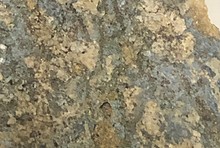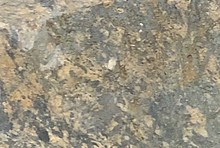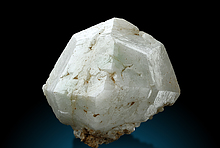Southern California's Real Gold.
Last Updated: 9th Jul 2017By William Borges IV
I have been going to the San Gabriel River since 1998. Growing up just 45 miles from the Motherlode, I have always had an interest in gold. I have moved around many times while growing up in the West. My first adventures started with a few pans, a small shovel in my backpack. I was armed with a printout about Eldoradoville located off of HWY 39. I was fueled by the prospector books I had acquired over the years starting back in the 1980s. I always spoke with other prospectors to understand the specific nature of this crazy (Very Crazy) river. Most prospectors have told me to find the gold here at the East Fork you have got to dig deep (4-6 ft.) and be ready for a boulder workout at god's Gym. Also, I need to make or buy a sluice box. I built a wooden sluice box in about two weeks time. I used dense hardwood, marine varnish, bolts, caulk and marine mat. (it worked great BTW). I was able to find many small gold pieces the size of white rice grains. I had many old timer miners chat me up about making that wooden sluice box. They loved it. I was able to see with my own eyes what the East fork really has in its golden depths. A miner named Ernie in his late 60s showed me his briefcase with vials of gold inside of a showcase. My jaw dropped. He told me that he has been working this region since the 1960s. Well, they were correct about the workout. As for the gold-bearing soils, it was hit or miss. Because this area is always mined (since the 1860's), the gold isn't where you would suspect it to be. Me being a bullheaded individual would keep digging and not really think about it until I saw how many others were doing the same thing...with little gold to show for it. I always found gold there, but, I was beginning to think where the gold was and where the common mine diggings were not, had a significant correlation to my AU success.
First off, I would start to look for areas of the river that were trash and litter free. This means that it was overlooked or not the ideal conditions for finding gold. Next, I would look for overgrowth of plants next to a bend in the river. That's music to my golden ears. For finding East-Fork gold deposits I need to think like a flood water rushing through this large basin ravine. I started to take samples from areas right off the foot trails themselves. I was finding chunky gold doing that. Next, I began to look at the stranded boulders above the riverbed. I figure no one has ever mined it I will be the first to try. I was finding more gold. The quantity was going up but, I wasn't finding any large pieces. I decided to dig deep on a remote Boulder, guess what I found...ZILTCH!!! I figured that the recent floods had just moved that boulder there and the driftwood around it was proof. I felt skunked. But it a great excuse to get some exercise.
I began to think about the eons of floods and the scouring of this area. I looked at the bedrock and the pools below the trails that were hard to access. I began to use the river as my trail. This is when I had my breakthrough of success. I had found areas of the river that slowed and straightened out. I began to dig after reading the currents of the past. I was in tune and felt a good feeling when I began to dig into the ancient river soils that had a rusty gold tinge on the heavy gravels. Then I found it! Clunk! It landed in my sluice box entry flare and it never moved. A true East Fork picker was looking back at me! I said, thank you, God! I then did the "Gold Dance" miners do. It weighed as much as a U.S. dime. I came home and cleaned out my sluice mats and found even more of the shiny! Well, I can't wait to go again and find a new spot using the river as my guide again.
First off, I would start to look for areas of the river that were trash and litter free. This means that it was overlooked or not the ideal conditions for finding gold. Next, I would look for overgrowth of plants next to a bend in the river. That's music to my golden ears. For finding East-Fork gold deposits I need to think like a flood water rushing through this large basin ravine. I started to take samples from areas right off the foot trails themselves. I was finding chunky gold doing that. Next, I began to look at the stranded boulders above the riverbed. I figure no one has ever mined it I will be the first to try. I was finding more gold. The quantity was going up but, I wasn't finding any large pieces. I decided to dig deep on a remote Boulder, guess what I found...ZILTCH!!! I figured that the recent floods had just moved that boulder there and the driftwood around it was proof. I felt skunked. But it a great excuse to get some exercise.
I began to think about the eons of floods and the scouring of this area. I looked at the bedrock and the pools below the trails that were hard to access. I began to use the river as my trail. This is when I had my breakthrough of success. I had found areas of the river that slowed and straightened out. I began to dig after reading the currents of the past. I was in tune and felt a good feeling when I began to dig into the ancient river soils that had a rusty gold tinge on the heavy gravels. Then I found it! Clunk! It landed in my sluice box entry flare and it never moved. A true East Fork picker was looking back at me! I said, thank you, God! I then did the "Gold Dance" miners do. It weighed as much as a U.S. dime. I came home and cleaned out my sluice mats and found even more of the shiny! Well, I can't wait to go again and find a new spot using the river as my guide again.
Article has been viewed at least 665 times.















